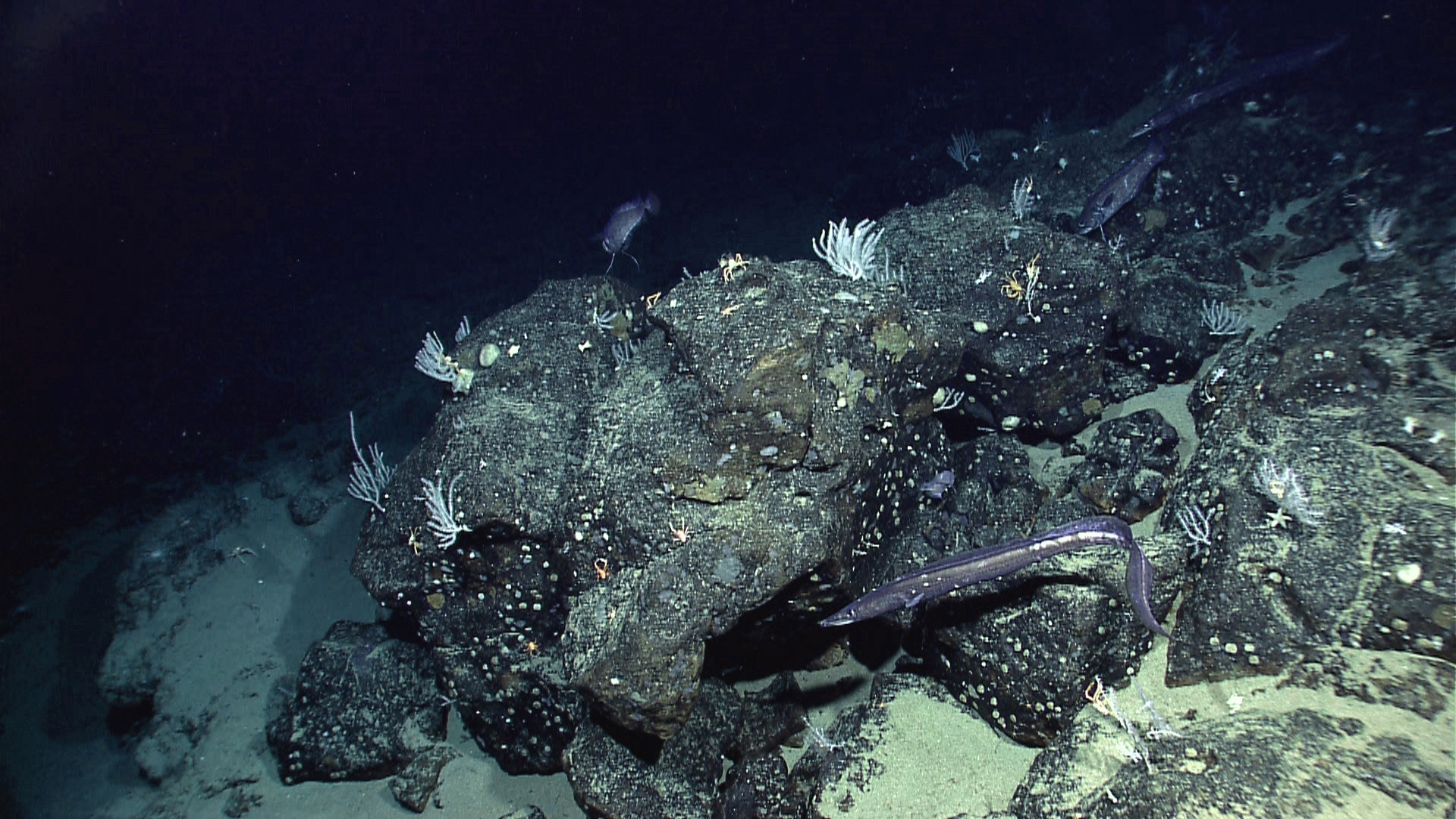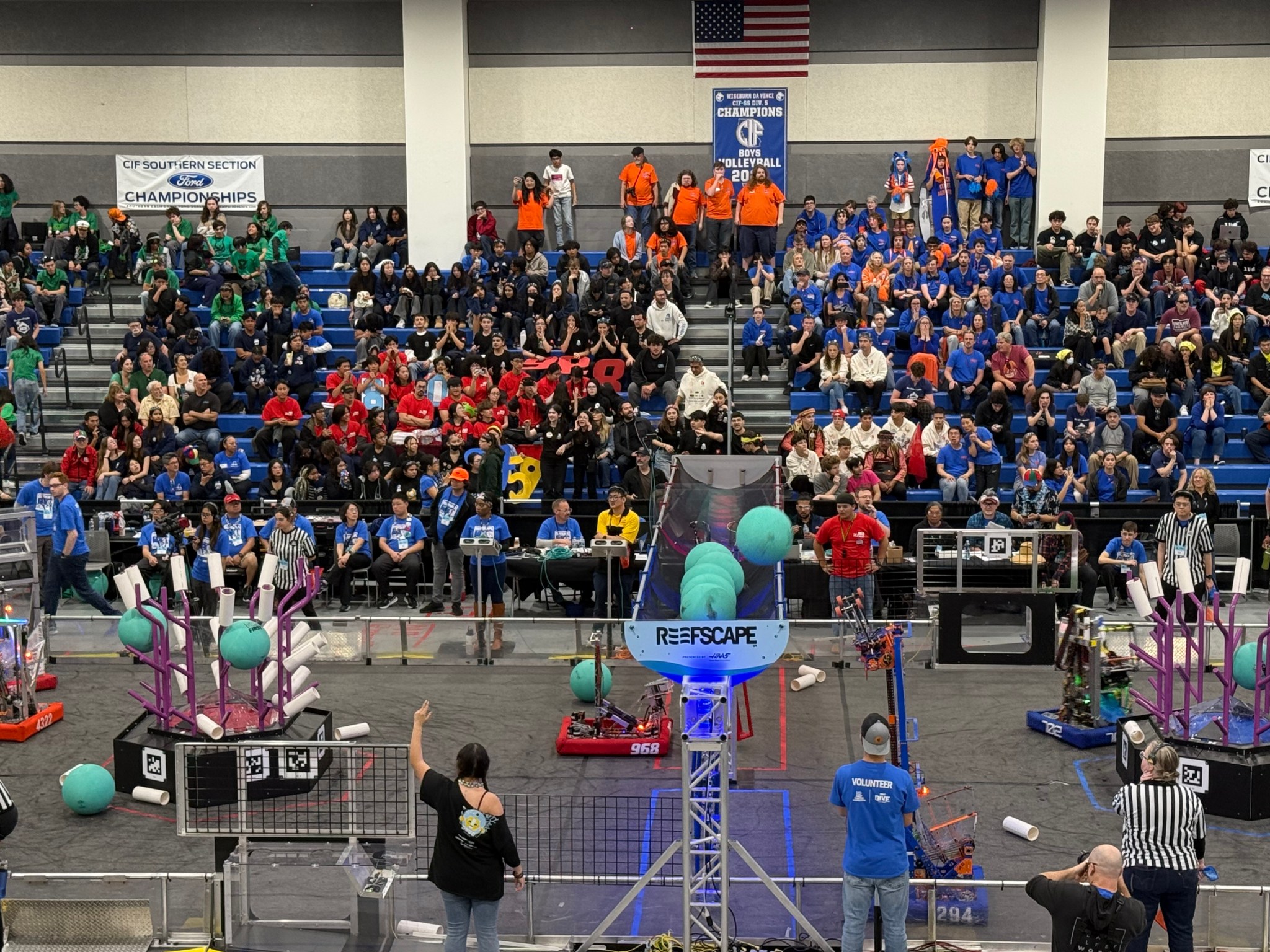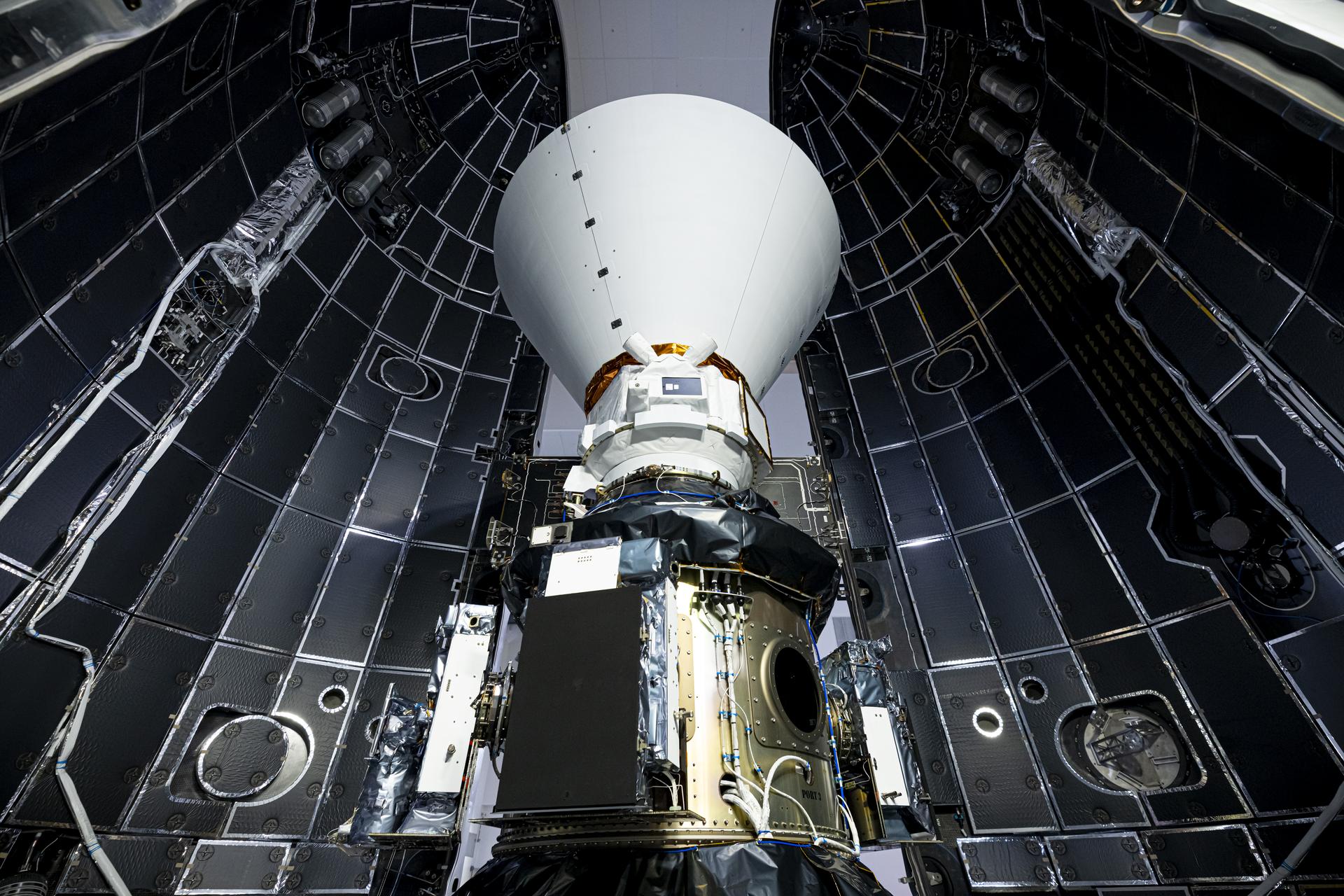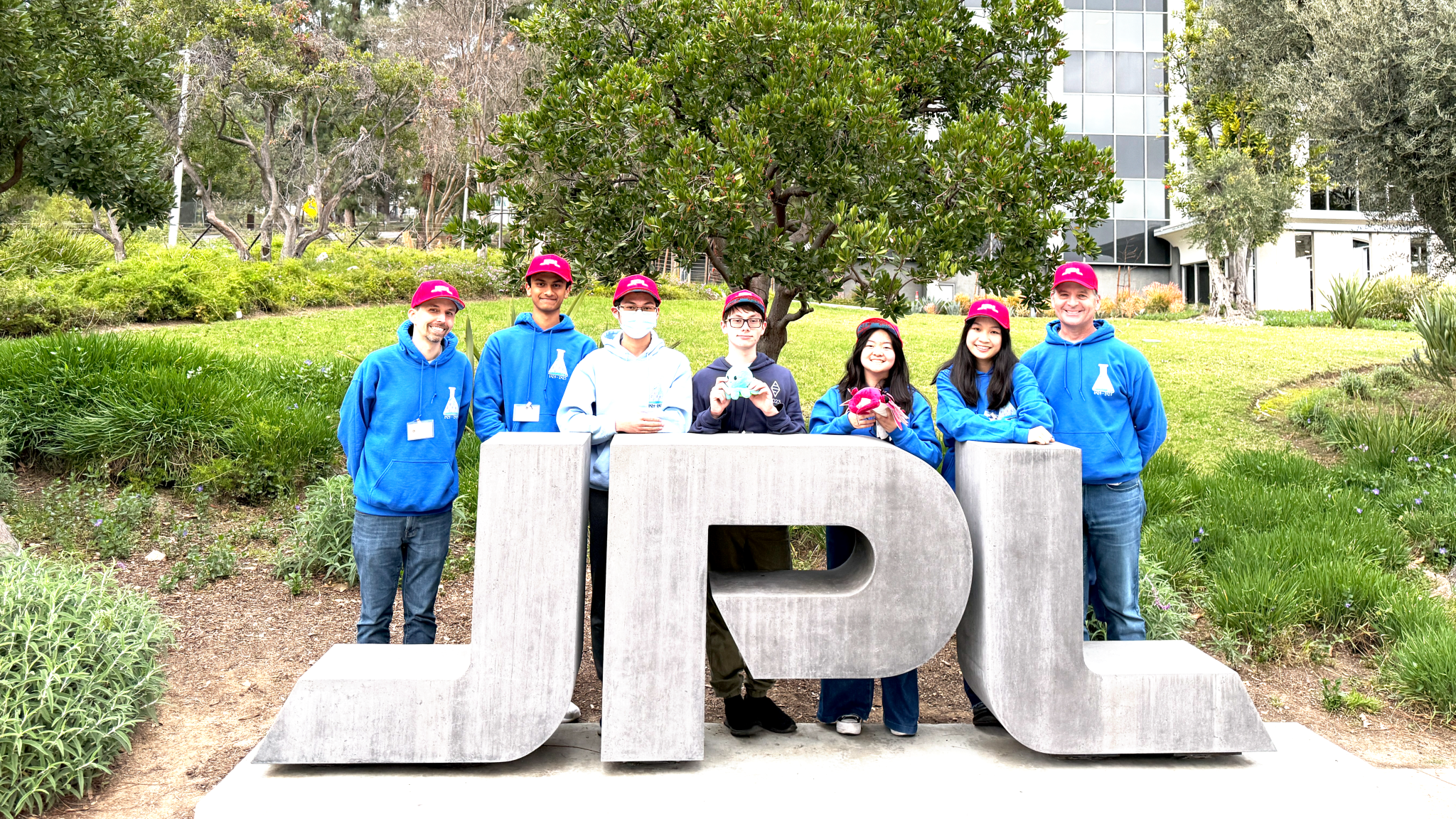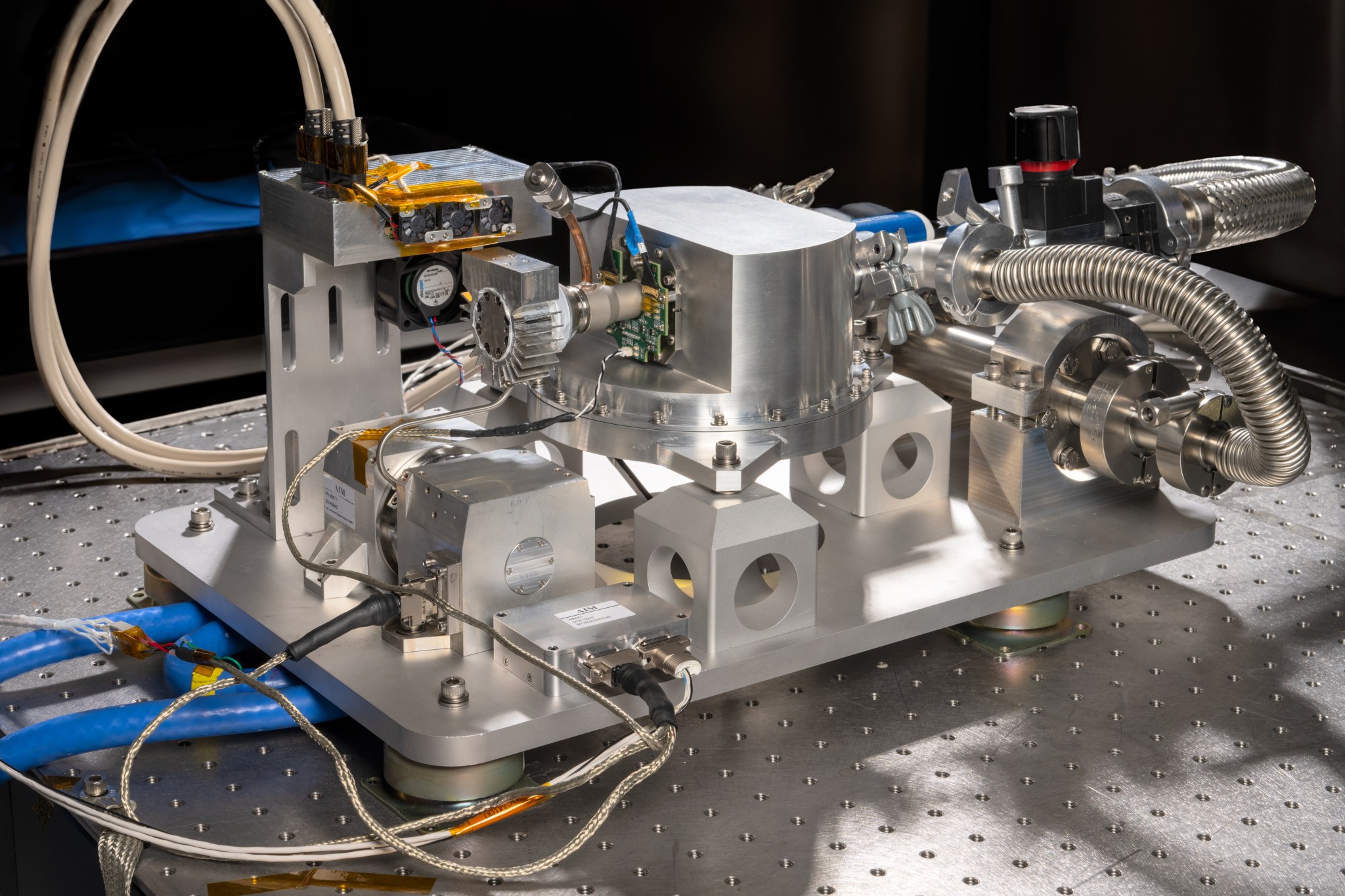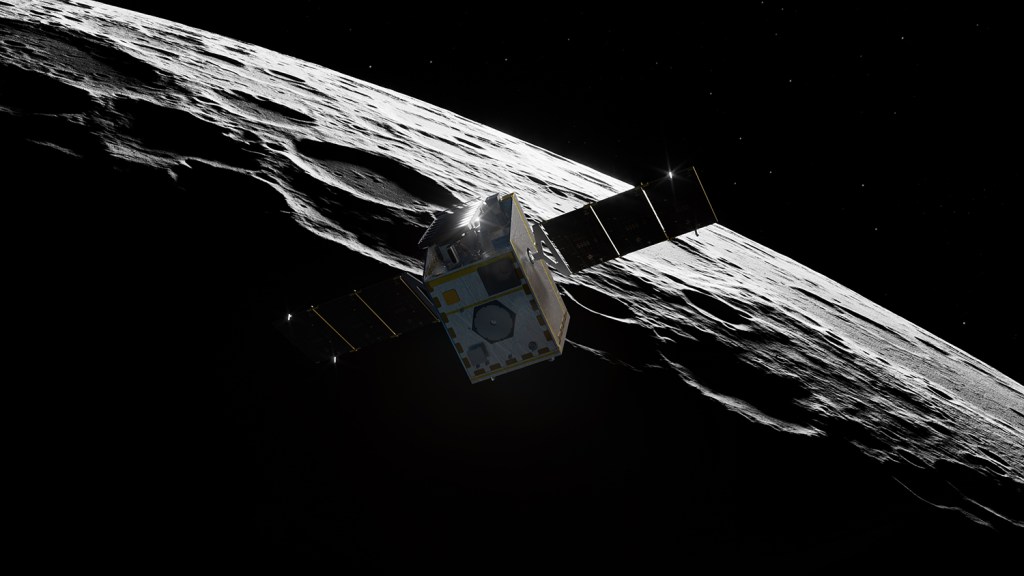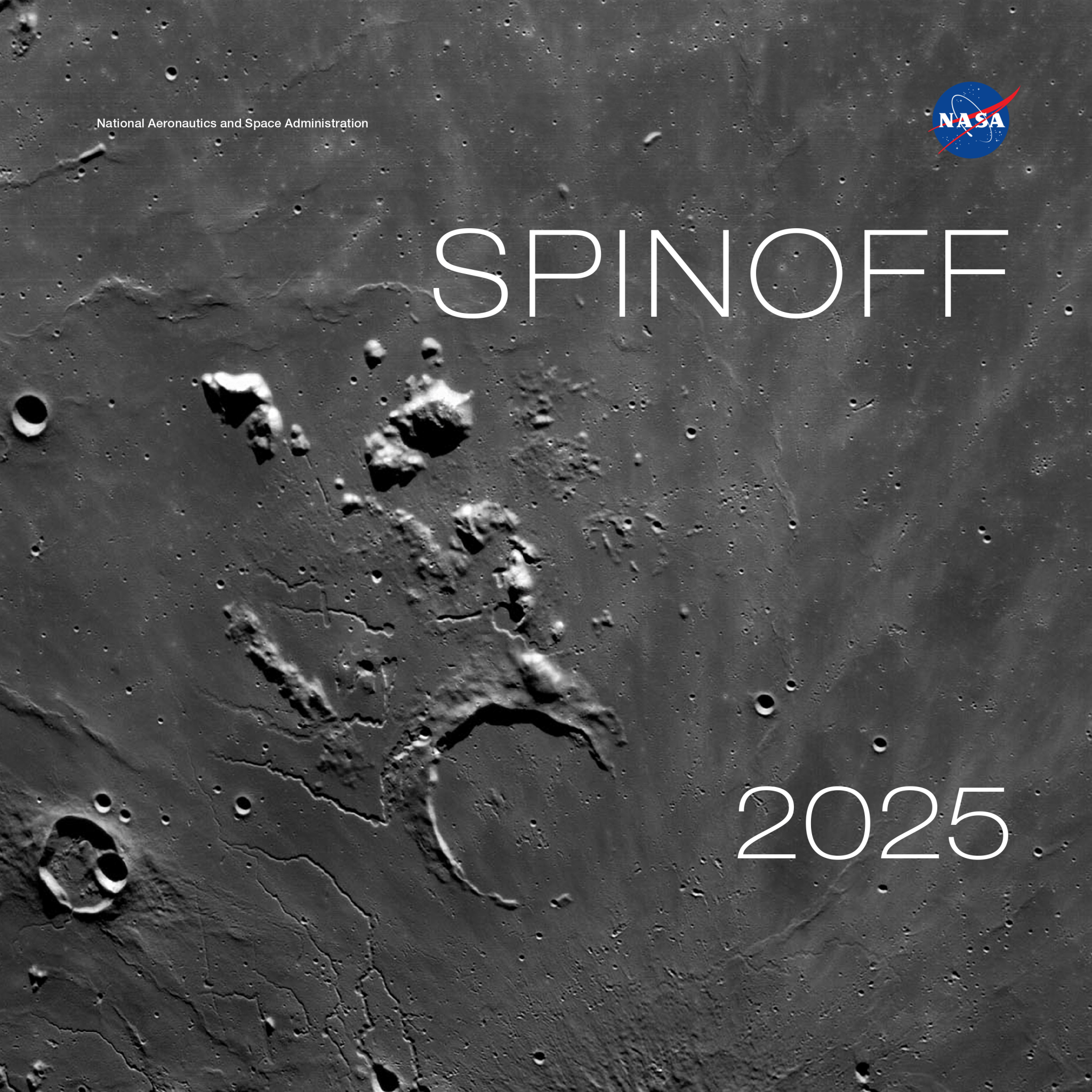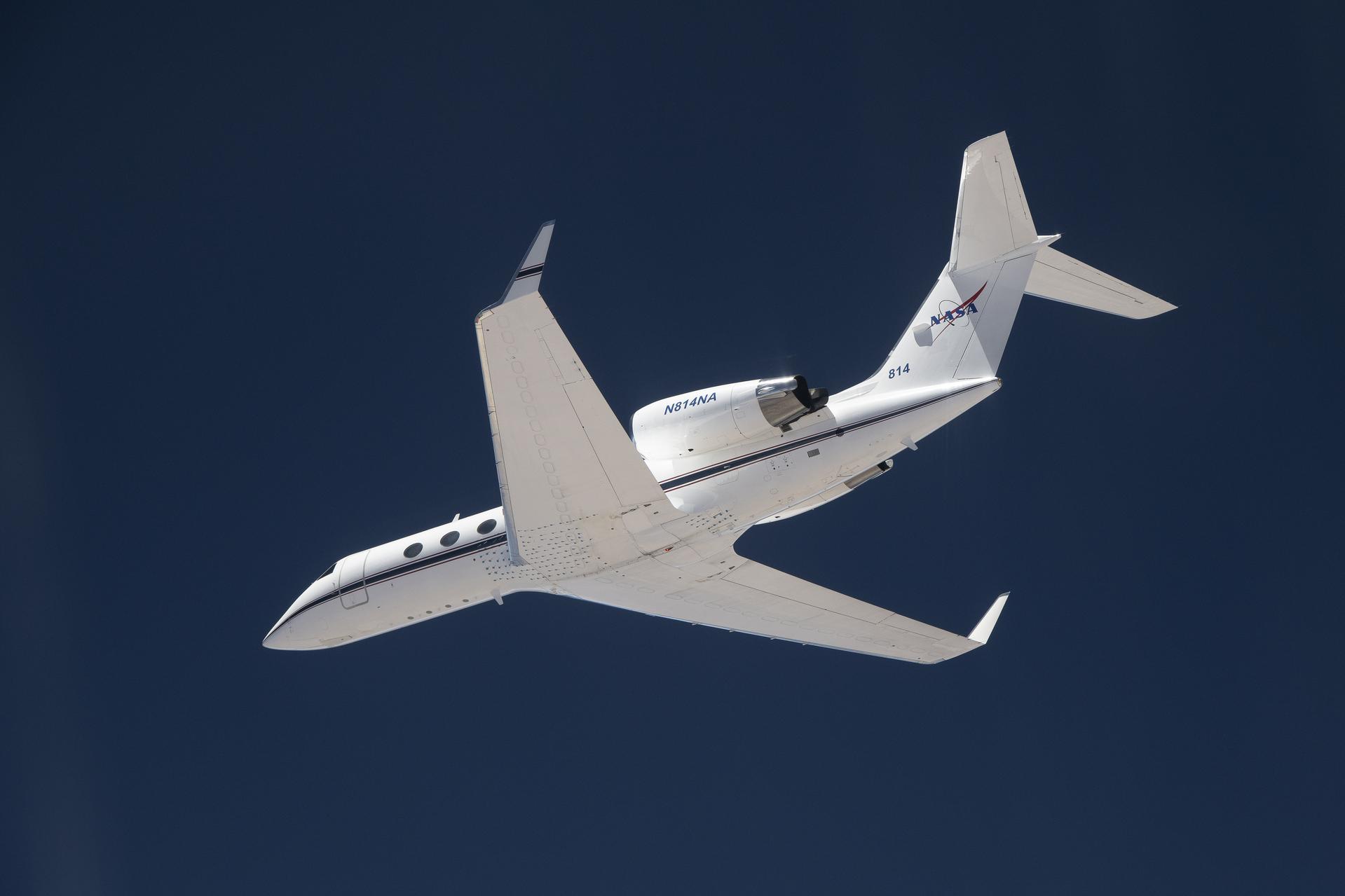6 min read Preparations for Next Moonwalk Simulations Underway (and Underwater) Located off the coast of Ecuador, Paramount seamount is among the kinds of ocean floor features that certain ocean-observing satellites like SWOT can detect by how their gravitational pull affects the sea surface. NOAA Okeanos Explorer Program More accurate maps based on data from the SWOT mission can improve underwater navigation and result in greater knowledge of how heat and life move around the world’s ocean. There are better maps of the Moon’s surface than of the bottom of…
Read MoreTag: Jet Propulsion Laboratory
Students Dive Into Robotics at Competition Supported by NASA JPL
Students, mentors, and team supporters donning team colors watch robots clash on the playing field at the FIRST Robotics Los Angeles regional competition in El Segundo on March 16. NASA/JPL-Caltech Robots built by high schoolers vied for points in a fast-moving game inspired by complex ocean ecosystems at the FIRST Robotics Los Angeles regional competition. High school students who spent weeks designing, assembling, and testing 125-pound rolling robots put their fast-moving creations into the ring over the weekend, facing off at the annual Los Angeles regional FIRST Robotics Competition, an…
Read MoreNASA Analysis Shows Unexpected Amount of Sea Level Rise in 2024
3 min read Preparations for Next Moonwalk Simulations Underway (and Underwater) Communities in coastal areas such as Florida, shown in this 1992 NASA image, are vulnerable to the effects of sea level rise, including high-tide flooding. A new agency-led analysis found a higher-than-expected rate of sea level rise in 2024, which was also the hottest year on record. NASA Last year’s increase was due to an unusual amount of ocean warming, combined with meltwater from land-based ice such as glaciers. Global sea level rose faster than expected in 2024, mostly…
Read MoreCosmic Mapmaker: NASA’s SPHEREx Space Telescope Ready to Launch
6 min read Preparations for Next Moonwalk Simulations Underway (and Underwater) Ahead of launch, NASA’s SPHEREx is enclosed in a payload fairing at Vandenberg Space Force Base on March 2. The observatory is stacked atop the four small satellites that make up the agency’s PUNCH mission. NASA/BAE Systems/Benjamin Fry NASA’s latest space observatory is targeting a March 8 liftoff, and the agency’s PUNCH heliophysics mission is sharing a ride. Here’s what to expect during launch and beyond. In a little over a day, NASA’s SPHEREx space telescope is slated to…
Read MoreUniversity High Knows the Answers at NASA JPL Regional Science Bowl
3 min read Preparations for Next Moonwalk Simulations Underway (and Underwater) A team from University High School of Irvine, California, won the 2025 regional Science Bowl at NASA’s Jet Propulsion Laboratory on March 1. From left, co-coach Nick Brighton, sophomores Shloke Kamat and Timothy Chen, juniors Feodor Yevtushenko and Angelina Yan, senior Sara Yu, and coach David Knight. NASA/JPL-Caltech In a fast-paced competition, students showcased their knowledge across a wide range of science and math topics. What is the molecular geometry of sulfur tetrafluoride? Which layer of the Sun is…
Read MoreNASA Uses New Technology to Understand California Wildfires
3 min read Preparations for Next Moonwalk Simulations Underway (and Underwater) The Compact Fire Infrared Radiance Spectral tracker, or C-FIRST, is managed an operated by NASA’s Jet Propulsion Laboratory, and supported by NASA’s Earth Science Technology Office. Combining state-of-the-art imaging technology with a compact design, C-FIRST enables scientists to gather data about fires and their impacts on ecosystems with greater accuracy and speed than other instruments. C-FIRST was developed as a spaceborne instrument, and flew onboard NASA’s B200 aircraft in January 2025 to conduct an airborne test. NASA/JPL-Caltech The January…
Read MoreHow NASA’s Lunar Trailblazer Will Make a Looping Voyage to the Moon
6 min read Preparations for Next Moonwalk Simulations Underway (and Underwater) NASA’s Lunar Trailblazer approaches the Moon as it enters its science orbit in this artist’s concept. The small satellite will orbit about 60 miles (100 kilometers) above the lunar surface, producing the best-yet maps of water on the Moon. Lockheed Martin Space NASA’s Lunar Trailblazer spacecraft gets covered in anti-static wrap before being shipped from Lockheed Martin Space in Littleton, Colorado, to the agency’s Kennedy Space Center in Florida, where it arrived on Jan. 29. Lockheed Martin Space Before…
Read MoreNASA’s Advancements in Space Continue Generating Products on Earth
The cover of Spinoff 2025, NASA’s annual publication that chronicles commercial products born from space technology, is a detailed view of the lunar surface captured by cameras on the Orion spacecraft on a close approach of the Moon during the Artemis I mission. Credit: NASA The latest edition of NASA’s Spinoff publication, which highlights the successful transfer of agency technology to the commercial sector, is now available online. For nearly 25 years, NASA has supported crew working in low Earth orbit to learn about the space environment and perform research…
Read MoreNASA Explores Earth Science with New Navigational System
3 min read Preparations for Next Moonwalk Simulations Underway (and Underwater) The G-IV aircraft flies overhead in the Mojave Desert near NASA’s Armstrong Flight Research Center in Edwards, California. Baseline flights like this one occurred in June 2024, and future flights in service of science research will benefit from the installment of the Soxnav navigational system, developed in collaboration with NASA’s Jet Propulsion Laboratory in Southern California and the Bay Area Environmental Research Institute in California’s Silicon Valley. This navigational system provides precise, economical aircraft guidance for a variety of…
Read More6 Things to Know About SPHEREx, NASA’s Newest Space Telescope
5 min read Preparations for Next Moonwalk Simulations Underway (and Underwater) NASA’s SPHEREx observatory undergoes testing at BAE Systems in Boulder, Colorado, in August 2024. Launching no earlier than Feb. 27, 2025, the mission will make the first all-sky spectroscopic survey in the near-infrared, helping to answer some of the biggest questions in astrophysics. BAE Systems/NASA/JPL-Caltech Shaped like a megaphone, the upcoming mission will map the entire sky in infrared light to answer big questions about the universe. Expected to launch no earlier than Thursday, Feb. 27, from Vandenberg Space…
Read More